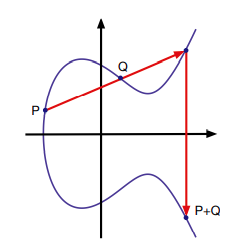At first, you see a circle. X^2+y^2=1 P is a rational point. You have a line (-1,0) to P. s is a slope.
Y=s(X+1)
Then you put the line to X^2+y^2=1.
(s^2+1)X^2+(2s^2)X+(s^2-1)=0
∴ X=-1, (1-s^2)/(1+s^2)
You see P on the line. P is a rational point on π, so it is infinite.
Q∪{∞}
If f(X,Y)=0, you pile circles and you have the point of infinity. C is complex plane. P(C) is Riemann sphere. This is the point of infinity. This cone is the three dimensions. This is quite complicated because of no rational point. Then you use an elliptic curve.
You can ignore zero. P and Q are rational points, so P+Q on E is still rational even if P+Q is the point of infinity. T is some finite abelian group.












0 件のコメント:
コメントを投稿